The Secret Lives of Squirrels
Proof that even the smallest creatures can achieve extraordinary things!
Isn’t it funny how quickly things can become the norm? I remember when spotting a squirrel during a walk was a real treat. I’d stop dead in my tracks, watching them in amazement as they scurried about, acting like little acrobats. Fast forward, and now we’re absolutely overrun with the cheeky critters in our garden. They leap from tree to tree, swing from the bird feeder, hoover up acorns, and even make themselves at home in our trees and hedges. These days, my reaction has shifted from surprise to a casual “Oh, a squirrel,” but I do remind myself how lucky we are to have such lively little lodgers sharing our space.
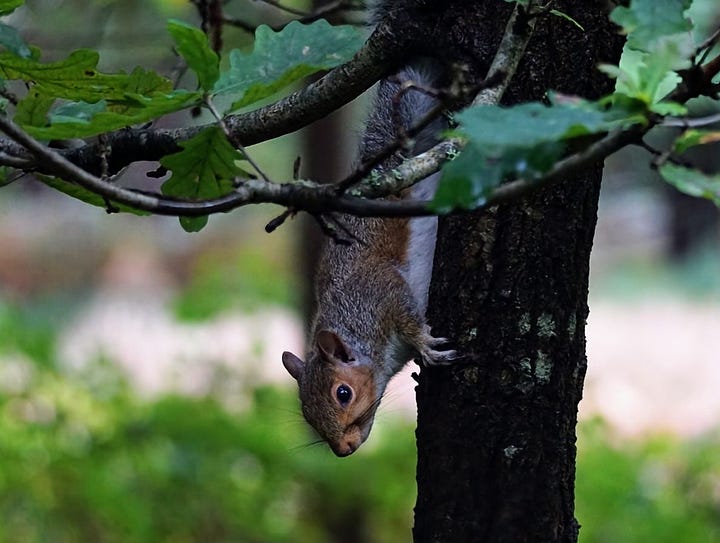
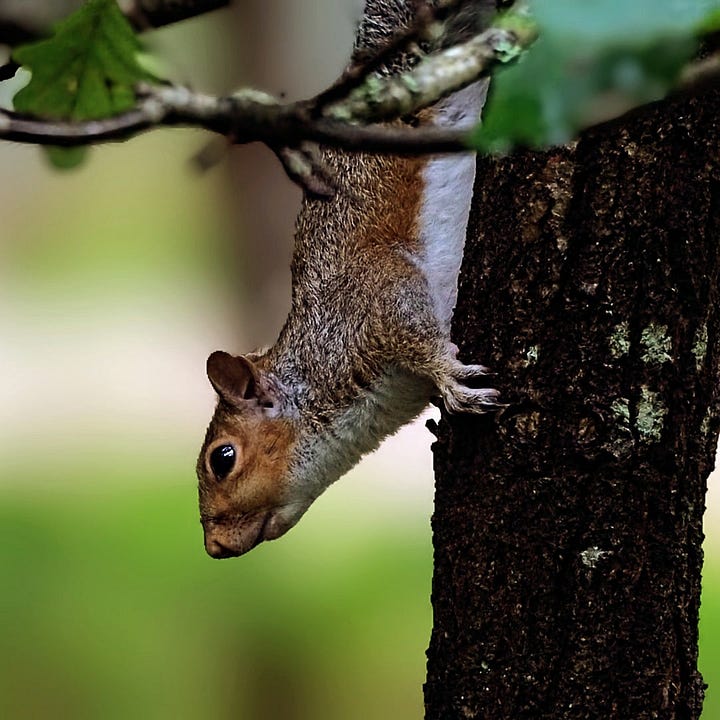
I understand that squirrels might not be everyone’s cup of tea. Personally, I find them fascinating, especially their building habits. One of the greatest things I’ve ever witnessed is a squirrel creating its home, or “drey” as it’s officially known. And no, this wasn’t one of those wildlife-watching moments where I’m crouched in a bush, half tangled in brambles and getting stung by nettles. Nope, I had front-row seats from the comfort of my living room window.
Typically, squirrels build their dreys in the forks of trees, but this particular squirrel decided our hedge was the perfect place for a winter home. Maybe it figured the thick foliage would offer better protection from the inevitable British downpours. After all, who can blame it for wanting a bit of extra shelter from the weather? It’s England; we all think the same way. Unlike foxes or badgers who go the underground route, squirrels build their dreys entirely out of natural materials - twigs, leaves, moss, and grass. From a distance, it looks like a scruffy bundle of sticks thrown together in a hurry, but don’t be fooled. These nests are tiny feats of engineering genius, playing a vital role in the squirrel's survival.
The Architecture of a Drey
Squirrels are, quite frankly, brilliant architects. With nothing but their sharp claws, teeth, and natural instincts, they manage to construct nests that are both sturdy and, dare I say it, rather comfy. The first step is always finding the perfect location. Squirrels are picky about where they set up home, usually opting for the crooks of strong branches, about 20 to 30 feet up. The spot needs to offer protection from strong winds and a bit of peace and quiet. Who wouldn’t want a home in a thick tree canopy, hidden away from prying eyes (and predators)?
Once they’ve scoped out their spot, they get to work collecting twigs, which form the skeleton of the drey. Squirrels don’t just grab any old branch; they’re selective, snapping smaller ones off trees or foraging for fallen twigs on the ground. After the initial framework is in place, the squirrel layers it with grass, bark, and leaves. This is where the magic happens—they weave everything together with such precision that the nest holds strong through rain, wind, and whatever else the weather can throw at it.
And just when you think they’re done, they add the final touches. The inside of the drey is the squirrel’s personal sanctuary. Here, they line it with the softest materials they can find, making it a snug spot to sleep, store food, and raise their young. Plus, the clever design of the drey ensures it stays put even in strong winds, while also keeping out the rain and snow.
Seasonal Homes
Squirrels don’t just build one drey and call it a day. No, they’re busy little homeowners, often building several throughout the year depending on the season. In the warmer months, they’ll put together smaller, temporary nests for a quick nap or as a safe spot to hide from predators. But as winter approaches, they ramp up their efforts, constructing larger, more insulated dreys to bunker down in for the colder months. Some even build multiple homes to keep their options open, because, well, why not?
Their ability to craft these dreys is a testament to their survival skills. Using nothing but what nature provides, they create homes that are perfectly adapted to the changing seasons and the constant threat of predators. Whether it’s protecting their young, storing food for the winter, or simply surviving a stormy night, the drey is essential to a squirrel’s way of life.
So, whenever I spot a squirrel dashing up a tree or nibbling on a nut, I take a moment to look up, especially at this time of year. Sometimes I’m lucky enough to see one of their expertly crafted dreys nestled among the branches - a humble but brilliant little work of architecture, proving that even the smallest creatures can achieve extraordinary things.

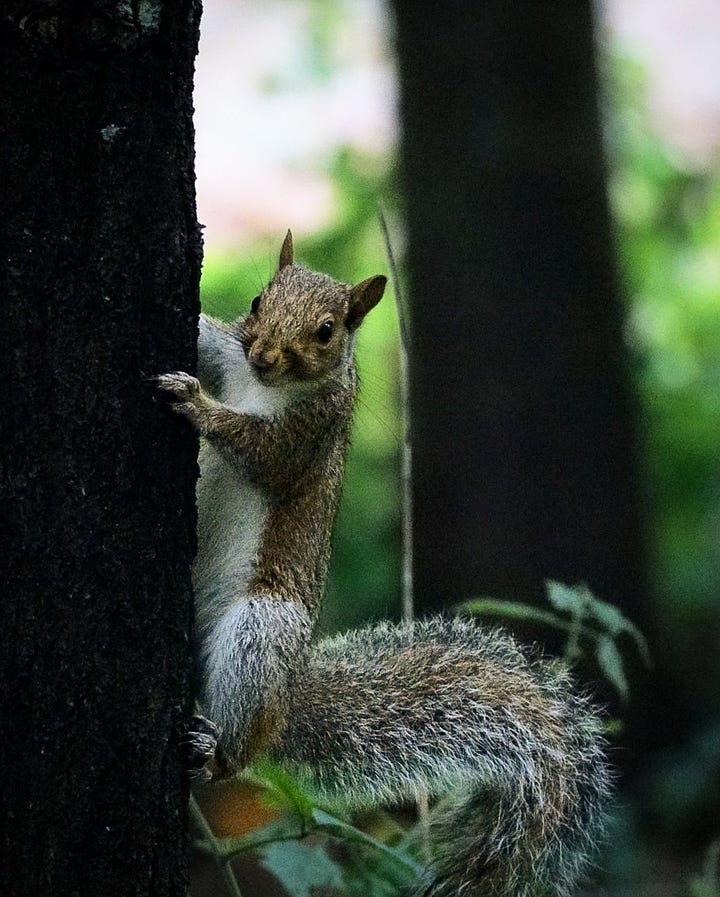
10 Fun Facts About Grey Squirrels
Native Origins: Grey squirrels are native to North America but have now made themselves at home in many other parts of the world, where they're thriving in new environments.
Food Burying Experts: Just like the Eurasian Jays, grey squirrels are masters of stashing away food for winter. Their impressive memory allows them to recall where they've buried nuts and seeds, using landmarks to guide them back to their hidden treasures.
Speedy and Agile: These little creatures can sprint up to 20 mph! They’re also incredibly agile, expertly navigating both the ground and tree branches with ease.
Super Sniffers: Grey squirrels have an incredible sense of smell. They can sniff out food even when it’s buried under layers of snow or soil.
Tail Talk: Their bushy tails aren't just for show. Squirrels flick their tails to communicate with others, signalling excitement, danger, or even a friendly hello.
Constant Chewing: A squirrel’s teeth never stop growing, which is why you’ll often see them gnawing on wood to keep their teeth in check.
Diverse Diet: Though known for hoarding nuts, grey squirrels aren’t picky eaters. Their menu includes seeds, fruits, fungi, insects, bird eggs, and even the occasional small animal.
Life Expectancy: In the wild, grey squirrels typically live for 6-12 years. But in captivity, away from predators and other dangers, they can live up to 20 years!
Surprising Swimmers: While it’s rare to catch them in the water, grey squirrels can swim when they need to. They paddle with their legs and use their tails for balance as they cross ponds or streams.
Clever Critters: Grey squirrels are masters of deception when it comes to hiding food. To throw off potential thieves, they often pretend to bury food in one spot, only to move it elsewhere later. Their sharp spatial memory helps them remember their real hiding places for months!
Do you have any fun facts to share about squirrels?
If you missed my last newsletter ‘The First Time I Heard an Eurasian Jay’s Call - And Why It Sent Me into a Panic’ you can read it here!
Thank you for reading! Your support and interest truly mean the world to me. If you enjoyed this glimpse into Our Country Life, consider subscribing for a Sunday morning dose of living closer to nature, through words and pictures.






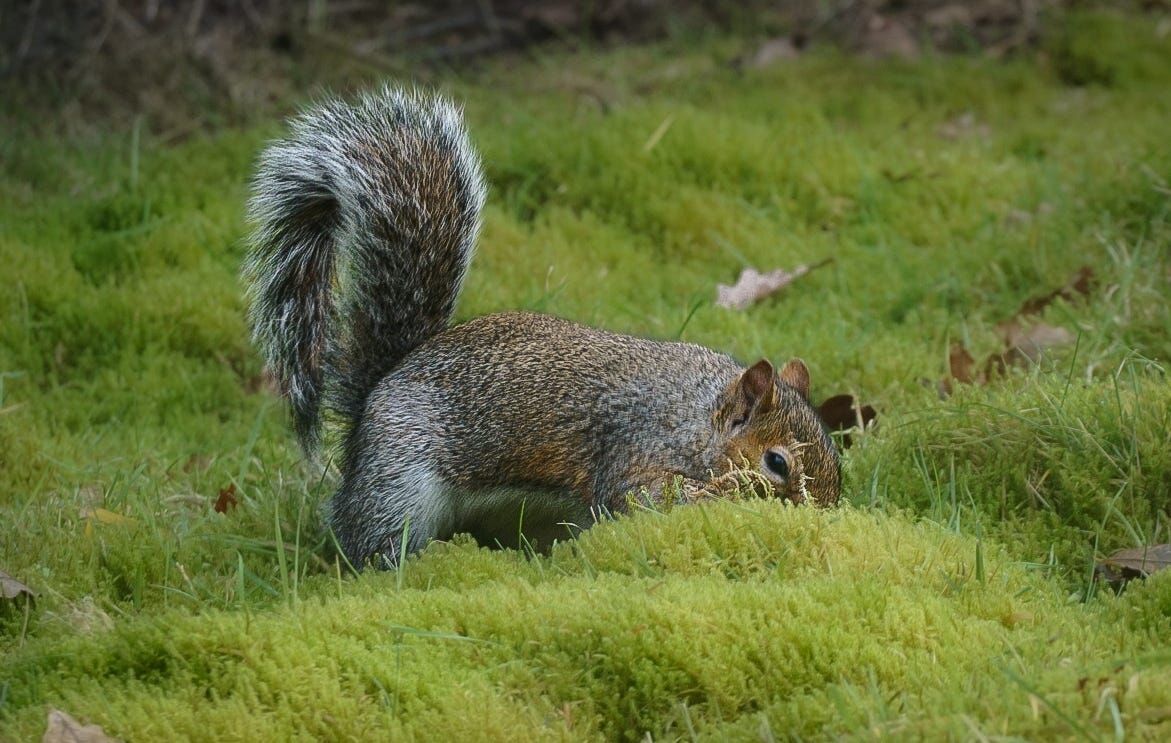


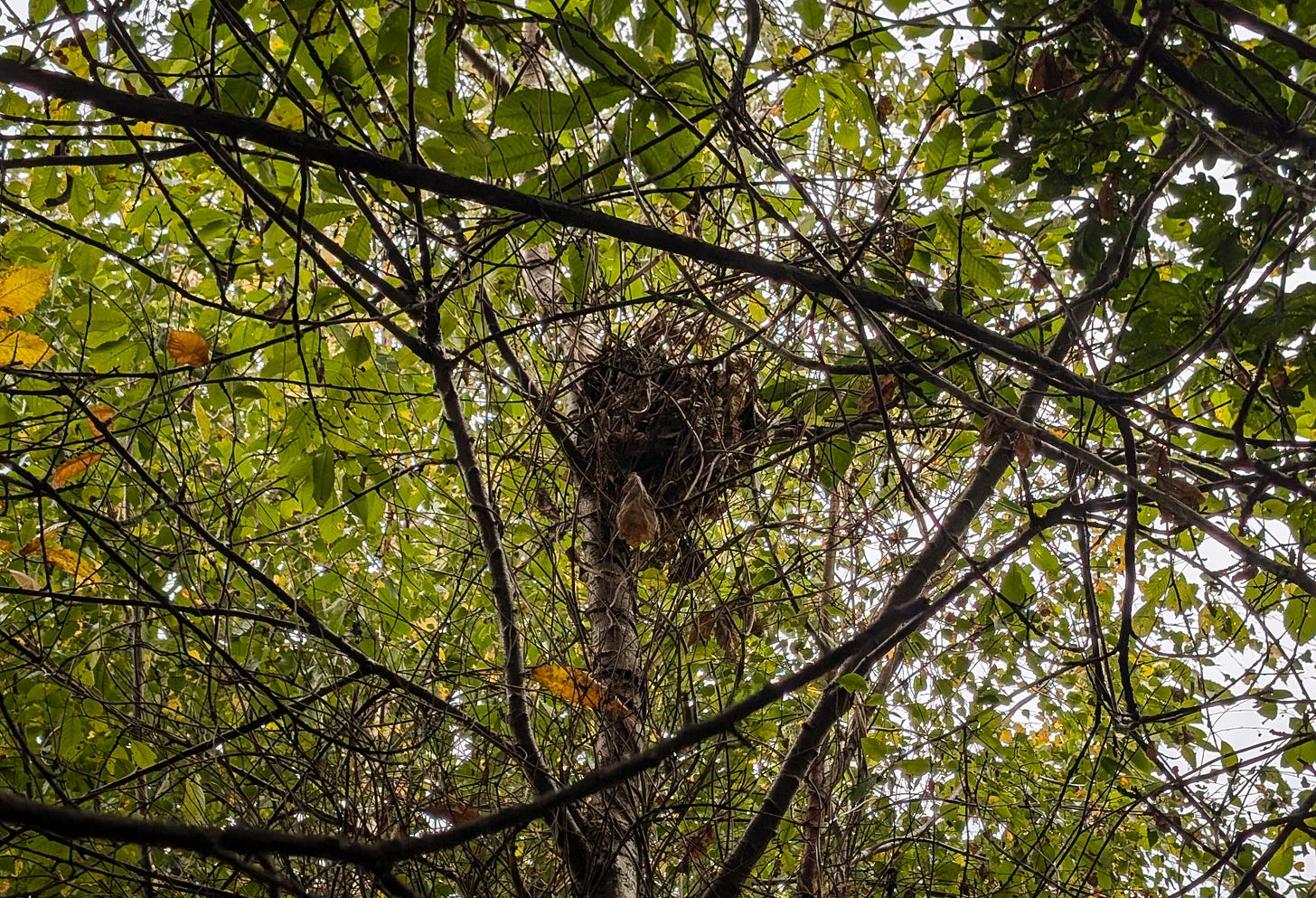

Thank you for a fascinating account.
Gorgeous photos! Fact 10 is my favourite. 😂 xx